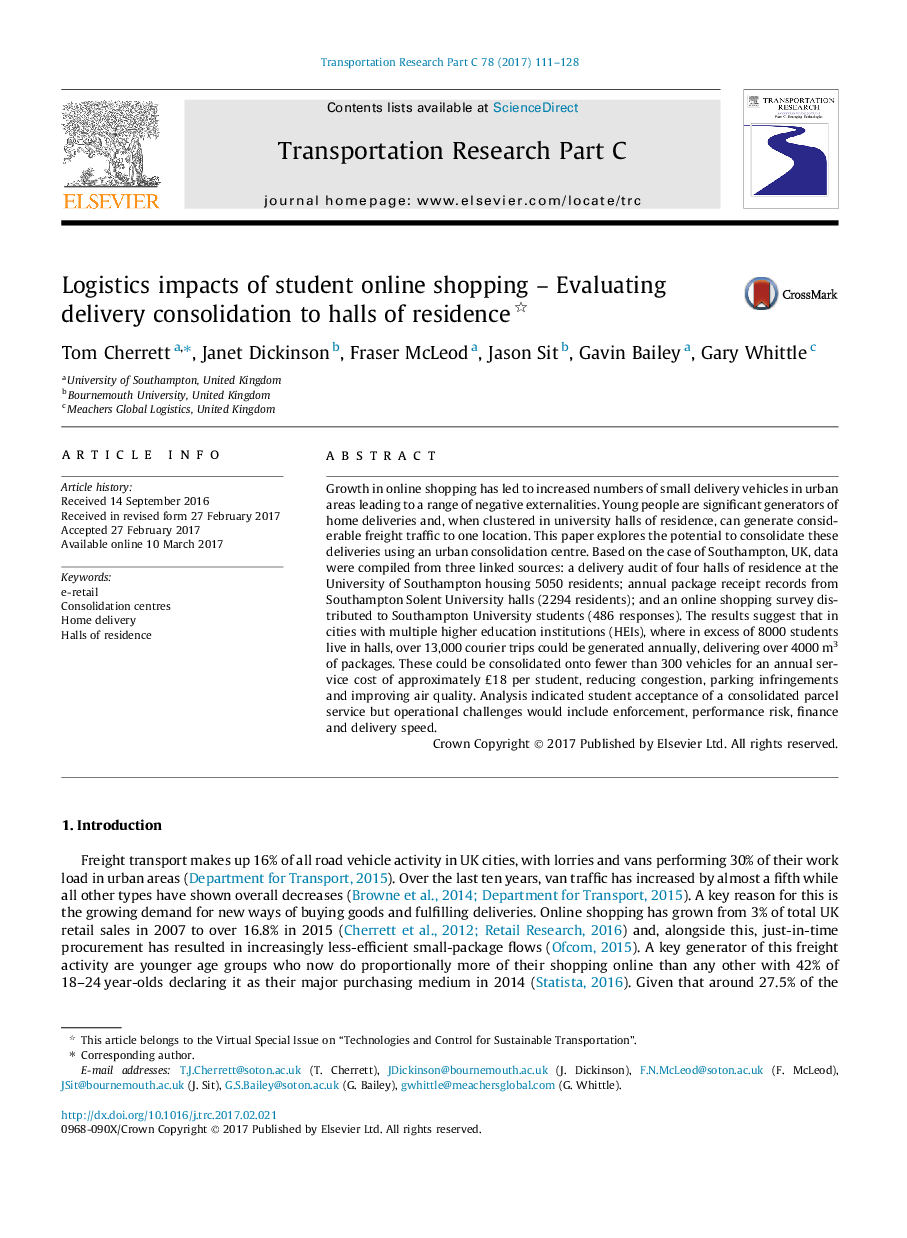| Article ID | Journal | Published Year | Pages | File Type |
|---|---|---|---|---|
| 4968510 | Transportation Research Part C: Emerging Technologies | 2017 | 18 Pages |
Abstract
Growth in online shopping has led to increased numbers of small delivery vehicles in urban areas leading to a range of negative externalities. Young people are significant generators of home deliveries and, when clustered in university halls of residence, can generate considerable freight traffic to one location. This paper explores the potential to consolidate these deliveries using an urban consolidation centre. Based on the case of Southampton, UK, data were compiled from three linked sources: a delivery audit of four halls of residence at the University of Southampton housing 5050 residents; annual package receipt records from Southampton Solent University halls (2294 residents); and an online shopping survey distributed to Southampton University students (486 responses). The results suggest that in cities with multiple higher education institutions (HEIs), where in excess of 8000 students live in halls, over 13,000 courier trips could be generated annually, delivering over 4000 m3 of packages. These could be consolidated onto fewer than 300 vehicles for an annual service cost of approximately £18 per student, reducing congestion, parking infringements and improving air quality. Analysis indicated student acceptance of a consolidated parcel service but operational challenges would include enforcement, performance risk, finance and delivery speed.
Keywords
Related Topics
Physical Sciences and Engineering
Computer Science
Computer Science Applications
Authors
Tom Cherrett, Janet Dickinson, Fraser McLeod, Jason Sit, Gavin Bailey, Gary Whittle,
